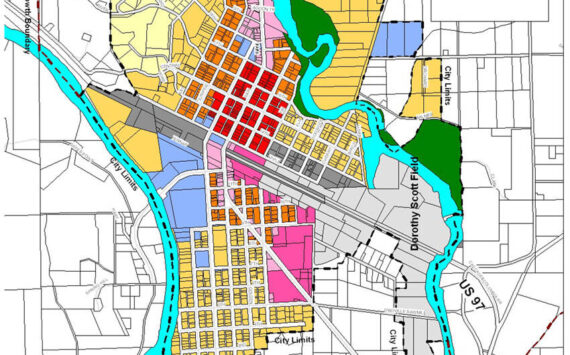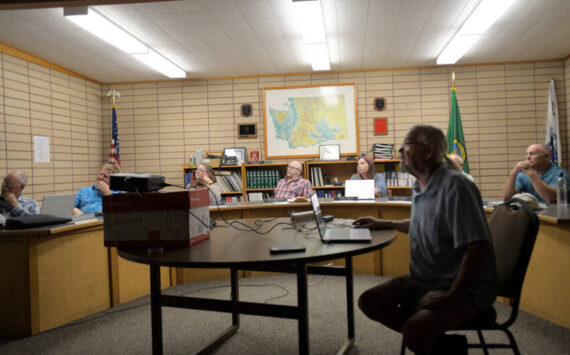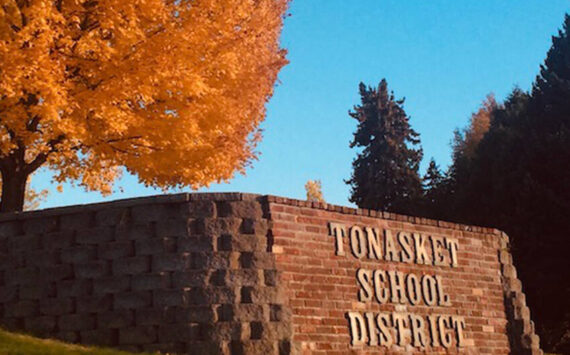YAKIMA – The state Department of Ecology issued a penalty of $395,000 to Crown Resources Corp. for water quality violations at the Buckhorn Mountain gold mine near Chesaw, but Crown says it will appeal, especially those fines related to a landslide.
“Crown Resources plans to appeal the penalty issued by the Washington Department of Ecology,” states Crown in a media statement released to the press. “The Company disputes certain DOE findings, notably the causes cited for the land slide during a period of unprecedented heavy rainfall and spring runoff near Gold Bowl Creek in 2011.”
According to Ecology, in 2011 and 2012, the Buckhorn Mountain mine’s groundwater capture zone failed to contain spring rains and snow melt, resulting in contaminated water reaching Gold Bowl Creek. In 2011, the mine discharged treated mine water in such a way that resulted in a landslide and debris flow that damaged Gold Bowl Creek. Water management during spring snow melt has been a well-documented problem at the mine, states the DOE.
“The 2011 landslide generated a debris flow that significantly damaged a large portion of Gold Bowl Creek’s stream channel,” said a recent press release from Ecology. “Ecology estimates it will take years to stabilize and re-establish damaged soils and vegetation on the slope and along Gold Bowl Creek. As a result, slope and stream bed erosion is expected to carry sediment down Gold Bowl Creek for year.”
Crown Resources, a subsidiary of Toronto-based Kinross Gold, replies, “Many of the issues noted by the DOE were self-reported and have been addressed, and during the past year we have worked closely with the DOE to review and mitigate these issues. In recent years, the company has made numerous procedural and technical improvements in its water management system and in the past year, has doubled treatment capacity and installed more dewatering and monitoring wells to protect water quality at Buckhorn.
“We are strongly committed to the protection of water quality and working with the regulatory authorities to maintain the highest environmental standards at Buckhorn.”
Crown was cited for failing to maintain its groundwater capture zone for a total of 94 days during both years. Violations in 2011, according to Ecology, include allowing water discharges causing slope instability and erosion, and for discharging water at an unauthorized point. The mine is required to capture contaminated groundwater from around mine excavations and tunnels and under surface stockpiles, and pump it to a treatment plant.
“Crown Resources is required to establish and maintain a groundwater capture zone at all times to protect water quality outside the capture zone,” explained Lorraine Powell, an Ecology hydro-geologist. “Water has to be pumped out of the mine workings and surrounding capture zone areas and treated onsite so water quality is protected while mine operations continue.”
According to Ecology’s investigation, the violations occurred primarily because the mine didn’t have adequate capacity to capture the contaminated water generated by the underground mine workings during the 2011 and 2012 spring seasons. Water generated in the underground mine can carry high concentrations of heavy metals such as copper, lead and zinc that must be captured and processed before being discharged at approved outfalls. In addition to heavy metals, the mine must meet standards for sulfate, nitrate, and acidity and must manage stormwater.
Excess mine water is collected in sump areas and flooded mine workings and is then pumped to holding reservoirs or to the wastewater treatment plant. In addition, groundwater is pumped from dewatering wells to capture pollutants introduced through mine operations and then is processed at the water treatment plant. The treated water is either discharged at approved outfalls or returned to the mine and reused.
Since operations began at the mine in 2007, Ecology has issued $62,000 in penalties, six notices of violation and six administrative orders directing the company to control stormwater, rectify groundwater capture zone inadequacies, prevent slope failures, and comply with permit limits for nitrates, sulfate, acidity, copper, lead, zinc and solids from stormwater ponds.
The mine is permitted to discharge treated mine water and stormwater to both surface and groundwater under its National Pollutant Discharge Elimination System (NPDES) Permit. The NPDES Permit issued in September 2007 is up for renewal this fall. Ecology is working with Crown Resources to update the permit and ensure that mine water management requirements address violations at the mine.
“We want to make it clear that Crown must operate the mine in a way that protects water quality as required in their discharge permit and by state law,” said Kelly Susewind, Ecology’s water quality program manager in Olympia. “The mine is important to the economy of the area. Water quality is important to its future as well. We believe both can be maintained.”
The Okanogan Highlands Association (OHA), a non-profit organization that says it works to educate the public about watershed issues, including the environmental threats of large-scale mining, says more needs to be done to protect the watershed.
“The Buckhorn Mine has water quality problems, and water quality standards should be strictly enforced,” said David Kliegman, the group’s director. “We hope that the issuance of these long overdue violations will help motivate Crown/Kinross to prioritize control of contaminants from the mine.
“The Department of Ecology’s recognition of these violations opens the door to finding solutions to the long-term water quality problems at the Buckhorn Mine. It is time for Crown/Kinross to follow through with their commitments and implement changes that are needed to improve the prospect of longterm environmental protection,” he added.
The watchdog group goes on to state that failure of the capture zone around the mine means that instead of Crown having control over the water impacted by mining, contaminated water is escaping into the environment.
“This lack of control has been ongoing since shortly after the mine began operating in 2008. In April 2009, Crown was fined $40,000 for inadequate capture of mine contaminants,” states the OHA in a recent press release.
Although the annual precipitation and snow pack of the past two years have been within expected ranges, the mine has not been prepared for predictable higher spring runoff and has had to store large quantities of water in unlined parts of the underground mine, according to the OHA. After installing larger pumps to move water out of mine shafts, untreated mine water escaped through an air vent and discharged directly into Gold Bowl Creek. This unpermitted discharge of mine water into surface water resulted in one of the violations issued, the group says.
“The extensive scope and overlapping nature of the violations took Ecology over a year to process,” OHS said. “OHA has consistently raised concerns about the inadequacy of plans to control pollution at the large-scale mine. OHA has voiced concerns about the impact of storing water in unlined underground mine sumps, especially during spring runoff and the escape of mine water into the environment.”
Crown Resources has 30 days to pay the penalty or file an appeal with the state Pollution Control Hearings Board.







